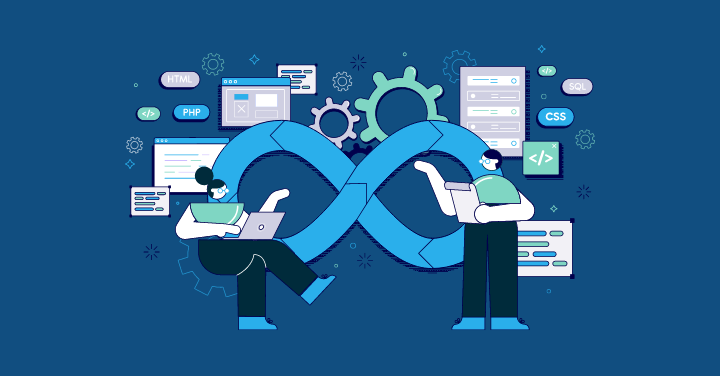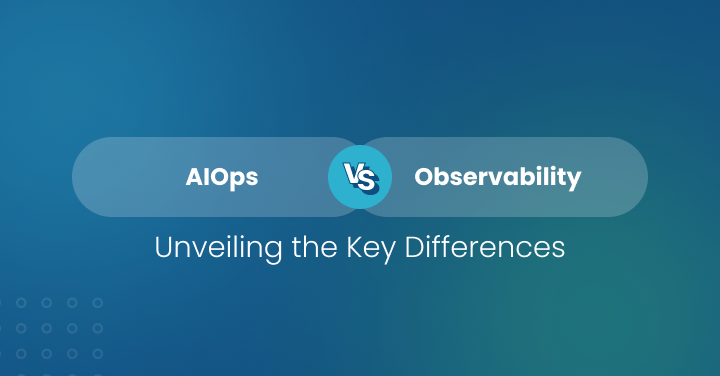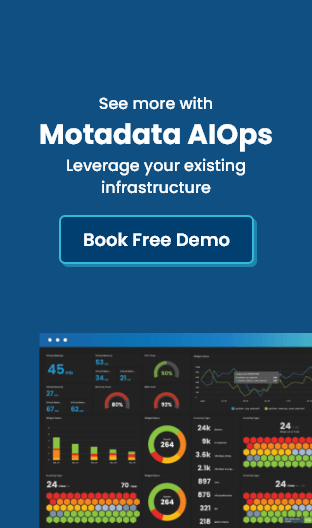Introduction
Managing IT operations is becoming increasingly complex as data sources and environments multiply. Artificial intelligence is now the backbone of innovation, driving smarter solutions for IT teams.
AIOps — Artificial Intelligence for IT Operations — leverages machine learning and big data to revolutionize how organizations handle performance, incident response, and operational efficiency.
Are you looking for ways to streamline your IT operations and improve your team’s productivity? Understanding the main approaches to AIOps will help you stay ahead in this fast-evolving field.
Understanding AIOps
AIOps stands for Artificial Intelligence for IT Operations, blending advanced analytics, machine learning, and big data to transform IT operations management.
Traditional IT operations relied on manual processes and siloed monitoring, struggling to keep up with today’s rapid data growth and complexity.
By integrating AI-driven data analytics, AIOps platforms automate routine tasks, deliver real-time insights, and enable proactive decision-making.
The result is a smarter, faster, and more resilient IT environment that adapts continuously to changing demands.
What is AIops and How it Differes from Traditional Methods?
Unlike conventional IT operations management, which often struggles with fragmented data and slow manual responses, AIOps uses machine learning to analyze large volumes of IT data in real time, correlating events and predicting issues before they impact users.
This shift enables IT teams to move from reactive troubleshooting to proactive and predictive problem management.
Approach 1 – Anomaly Detection & Event Correlation
Anomaly detection and event correlation form the foundation of AIOps. These capabilities identify unusual patterns and group related events, helping IT teams pinpoint potential problems faster than with traditional monitoring.
By analyzing large volumes of IT data across diverse environments, AIOps reduces the time and effort required to sift through countless alerts and performance metrics.
- Anomaly detection leverages algorithms to highlight outliers and deviations from historical data, raising early warnings for performance issues.
- Event correlation groups similar alerts, making it easier for teams to focus on the root cause instead of getting lost in a flood of notifications.
Traditional monitoring tools often overwhelm IT teams with generic alerts. In contrast, anomaly detection in AIOps highlights only truly abnormal activity, ensuring rapid identification and response to real threats. This targeted approach streamlines incident management and enhances operational efficiency.
How does anomaly detection differ from traditional monitoring?
While traditional monitoring simply tracks predefined metrics and triggers alerts based on static thresholds, AIOps with anomaly detection uses dynamic models and historical trends, flagging genuine irregularities rather than generating redundant warnings.
Approach 2 – Root Cause Analysis (RCA) Automation
Automating root cause analysis (RCA) represents a transformative approach within AIOps. By leveraging machine learning and advanced data analytics, IT operations teams can swiftly pinpoint the origins of performance issues, minimizing the need for extensive human intervention.
This automation enhances operational efficiency, driving down mean time to resolution (MTTR) through real-time anomaly detection and event correlation.
Actionable insights derived from large volumes of data empower IT personnel to refine their incident management processes, ultimately enhancing user experiences and service management.
Approach 3 – Predictive Analytics for Incident Prevention
Predictive analytics is a hallmark of advanced AIOps solutions, offering IT teams the power to preemptively avoid incidents.
By harnessing big data analytics and machine learning, AIOps platforms forecast potential system failures, resource spikes, or performance bottlenecks before they affect users.
Through advanced analytics, predictive models analyze historical data and current patterns to estimate the likelihood of specific incidents. This proactive approach allows teams to take preventive measures, safeguarding applications and minimizing downtime.
With predictive analytics, organizations can shift from reactive troubleshooting to forward-looking incident prevention. IT teams gain actionable insights to optimize capacity, improve performance management, and maintain robust service levels.
How do predictive analytics in AIOps help prevent downtime?
By continuously analyzing historical and real-time data, predictive analytics identify emerging risks and alert teams ahead of time. This enables swift action to prevent outages and maintain high availability of critical IT systems.
Approach 4 – Intelligent Alerting & Noise Reduction
Managing alert storms is a constant challenge for IT operations teams. AIOps tackles this with intelligent alerting and noise reduction, ensuring only actionable insights reach the team. Event management is streamlined, reducing the mean time to detect and resolve issues.
Intelligent alerting uses AI to suppress duplicate and non-essential notifications, focusing attention on the most critical incidents. This lowers alert fatigue and helps prioritize genuine threats requiring intervention.
Noise reduction enables IT teams to focus on meaningful alerts, cutting through irrelevant background information. With fewer distractions and more accurate event management, teams resolve problems faster and improve operational outcomes.
How can AIOps reduce alert fatigue for IT teams?
By using machine learning algorithms to correlate and contextualize events, AIOps platforms automatically filter out unnecessary alerts, ensuring operators are only notified of significant, actionable issues.
Approach 5 – Automated Remediation & Orchestration
Automated remediation and orchestration represent the pinnacle of AIOps capabilities, allowing incident resolution with minimal human intervention.
Service management platforms integrate AIOps to trigger workflows that address common IT issues instantly, maintaining system reliability and boosting operational efficiency.
By codifying best practices, AIOps orchestrates corrective actions based on AI-driven insights. Automated remediation ensures faster response times, consistent issue resolution, and optimized resource utilization.
AIOps platforms typically offer the following key features:
| Component/Feature | Description |
| Data Aggregation | Collects data from multiple sources, providing unified visibility into IT environments |
| Machine Learning | Drives pattern detection, anomaly recognition, and predictive analytics |
| Event Correlation | Groups related alerts and suppresses duplicates, reducing noise |
| Automation & Orchestration | Executes predefined workflows for incident response and remediation |
| Real-Time Analytics | Provides immediate insights to enable rapid decision-making |
| Historical Data Analysis | Identifies trends and recurring issues for long-term improvement |
Automated remediation and orchestration empower IT operations teams to maintain stability and reliability while reducing manual workload.
What are the key components or features to look for in an AIOps platform?
Look for platforms offering comprehensive data aggregation, robust machine learning, advanced event correlation, seamless automation, real-time analytics, and in-depth historical data analysis.
Choosing the Right AIOps Approach for Your Organization
Selecting an AIOps platform requires a careful evaluation of your organization’s objectives, existing IT personnel, data sources, and business case. Begin by assessing your most pressing use cases, such as reducing downtime, improving incident management, or enhancing customer experiences.
Determine whether your team prefers a build-your-own solution for customization or an out-of-the-box platform for rapid deployment.
Consider the diversity and volume of data your environment generates. Effective AIOps adoption involves identifying relevant data sets, aligning them with your business goals, and ensuring seamless integration across systems.
Engaging stakeholders and IT teams early fosters better implementation outcomes. With a clear strategy, organizations can maximize the value of AIOps solutions and optimize operational efficiency.
How should an organization choose the right AIOps approach?
Analyze organizational needs, available data, current IT service management practices, and desired outcomes. Evaluate platforms based on features, scalability, and ease of integration, then build a robust business case to support your choice.
Conclusion
Adopting AIOps approaches is essential for IT managers aiming to enhance operational efficiency and performance. Each method discussed—from anomaly detection to automated remediation—offers unique benefits tailored to different organizational needs.
By selecting the right approach, you can not only streamline your IT operations but also proactively address issues before they escalate into significant problems.
Embracing these strategies will empower your team to work smarter, ensuring your organization remains competitive in today’s fast-paced digital landscape.
If you’re ready to transform your IT operations, don’t hesitate to reach out for a consultation on implementing AIOps tailored to your specific requirements.
FAQs:
AIOps (Artificial Intelligence for IT Operations) uses artificial intelligence and big data to automate IT processes, enhance operational efficiency, and improve incident response. It enables IT teams to monitor, detect, and resolve issues faster than traditional methods, boosting service reliability and reducing manual workload.
Industries with complex IT environments—like network operations, data centers, healthcare, finance, and manufacturing—see significant benefits from AIOps. These approaches optimize performance, support mission-critical use cases, and enhance customer experience by proactively managing and resolving operational issues.
Anomaly detection uses advanced data science to identify real-time deviations from historical performance, whereas traditional monitoring relies on static thresholds. AIOps highlights true anomalies, enabling faster resolution of performance issues and reducing false positives common in legacy monitoring systems.
Predictive analytics in AIOps analyzes historical data to forecast potential performance problems, allowing IT teams to address risks before downtime occurs. This proactive approach improves performance management, minimizes disruptions, and ensures continuous system availability through data-driven insights.
Organizations should evaluate AIOps solutions based on IT service management needs, best practices, business objectives, and available data sets. The right approach aligns with strategic goals, integrates seamlessly, and delivers measurable value through enhanced operational efficiency and problem resolution.







